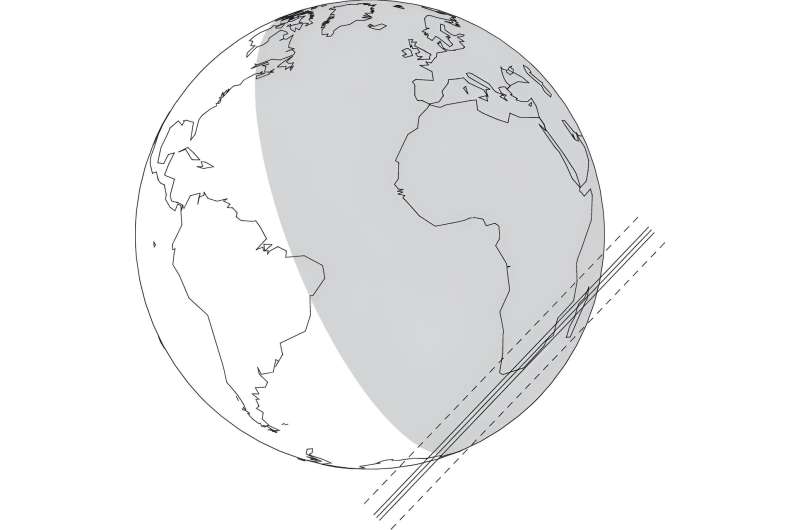This article has been reviewed according to Science X's editorial process and policies. Editors have highlighted the following attributes while ensuring the content's credibility:
fact-checked
peer-reviewed publication
trusted source
proofread
Observations find evolving material, not rings, circling Centaur Chiron

Observations during a stellar occultation detected the presence of evolving material orbiting around Centaur (2060) Chiron, rather than a two-ring system interpretation, according to a paper by Planetary Science Institute Senior Scientist Amanda Sickafoose.
"We observed a star passing behind the Centaur Chiron from the 1.9-m telescope in Sutherland. We detected dips in the starlight as it was blocked by Chiron's nucleus as well as by material located between 300 to 400 kilometers on either side," said Sickafoose, lead author of the paper "Material Around the Centaur (2060) Chiron from the 2018 November 28 UT Stellar Occultation" that appears in The Planetary Science Journal.
"These data were used to rule out any substantial global atmosphere around Chiron. The locations and amounts of material that were detected around Chiron are different enough from previous observations to suggest that there is not a stable ring system but rather surrounding material that is currently evolving," Sickafoose said.
An occultation is an event that occurs when one object is hidden from the observer by another object that passes between them. Stellar occultations have proven to be an effective method by which to measure the sizes and shapes of small bodies in the outer solar system, as well as to discover and characterize planetary atmospheres and rings.
Centaurs are small solar system bodies on chaotic orbits around the sun between Jupiter and Neptune that cross the orbit of one or more of the planets. They are thought to have originated in the outer solar system, and some Centaurs show cometary-like outgassing. The first small-body ring system detected in the solar system was around the largest Centaur, (10199) Chariklo, in 2013. Chiron is the next largest of these objects, at approximately 200 km in diameter.
"There is material orbiting around Chiron that is evolving on relatively short timescales. Past stellar occultation observations have detected material around Chiron's nucleus, and it was thought to be due to jets or a shell of surrounding debris. Data from a 2011 occultation were interpreted to be a two-ring system like that discovered at Chariklo. The observation reported here, from 2018, is not consistent with the two-ring interpretation," she said.
Little is known about how and where rings can form around small bodies. Orbiting material should also disperse relatively quickly without confinement or replenishment mechanism. If Chiron had a stable ring system, it would be one of only a few such objects. Instead, Chiron appears to be the only object observed to date that has enough surrounding material to observationally mimic rings, but instead the locations and amounts of material vary over just a few years.
Continued observations of Chiron, as well as the other minor planets that are thought to have rings, will provide insight into what makes these objects unique from their counterparts that lack surrounding material.
More information: Amanda A. Sickafoose et al, Material around the Centaur (2060) Chiron from the 2018 November 28 UT Stellar Occultation, The Planetary Science Journal (2023). DOI: 10.3847/PSJ/ad0632
Journal information: The Planetary Science Journal
Provided by Planetary Science Institute





















